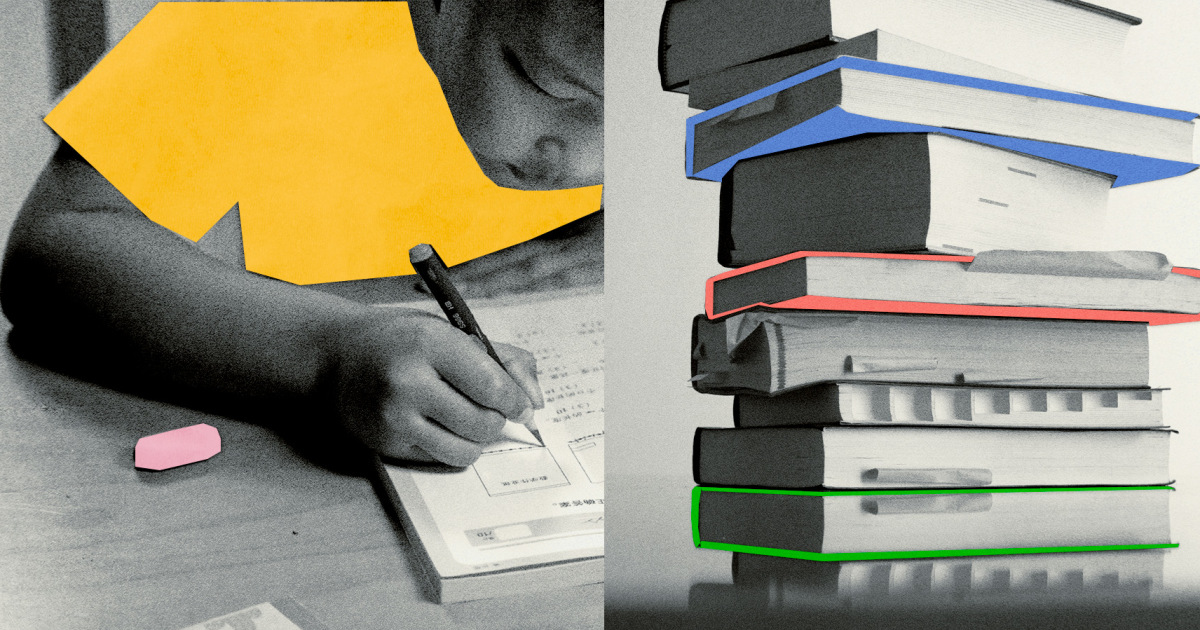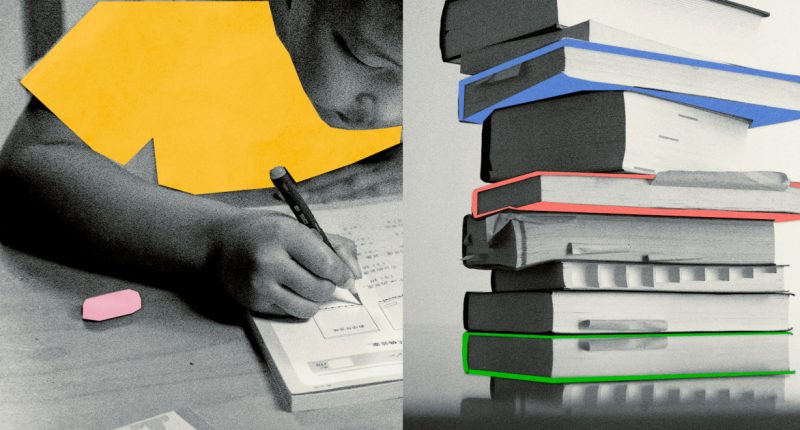
With its vaguely sad-looking logo burned into the brains of children across the world, Kumon has been a staple of Asian American life for decades. The math and reading training center has been the subject of standup jokes, memes and, most recently, TikTok fame.
Videos of young adults spoofing their time at Kumon have reached millions, bringing in Asian American audiences who say they can definitely relate.
“I feel like I spent my whole childhood at Kumon,” said Aly Panjwani, 26, who was a student at a Texas center from elementary to early high school. “It was somewhere between a community center, tutoring center and a cult.”
Kumon-Tok is mostly filled with jokes about tall stacks of homework and anxiety-inducing timed tests, a common experience that represents a few laughs and stellar mental math skills years later.
“It’s a place for childhood trauma,” one Indian American TikToker joked in a viral video talking about her experiences.
Kumon-related content is among the most popular on her page, with commenters hungry to chime in with their own experiences.
“Kumon was the death of me,” one person said in the comments of one of her videos.
TikToks like hers have given Asian Americans the chance to reignite their collective Kumon commiserating, something they say brought them together as kids, too.
Panjwani said that, strangely, Kumon provided a space for him to spend time with his friends and cousins, as they were also all enrolled in classes there. As he got older, he also found himself getting closer in age to the center’s teachers and support staff, who were high school students, too, he said.
“It was a thing we all did together,” he said. “At times we really hated it, and at times we found it a space to hang out with each other.”
Parents who went to Kumon as kids are also now documenting their own children completing the familiar packets of work.
Popular creator Vidya Gopalan has gained a following of nearly 3 million sharing videos of her kids, some of which center around their Kumon journeys.
In one video, she jokingly hands them extra Kumon worksheets to do after they’ve just finished their homework.
“You can’t have any fun unless you finish it,” she jokes.
Kumon has long been the subject of debate among parents and educators. Some say it’s unnecessary, while others say it can really help.
Childhood education experts see both sides of it.
“It really pushes academics in early childhood education, where the focus should be on play, socialization, and building relationships,” said Jamie Cho, an assistant teaching professor of justice in early learning at the University of Washington. “It’s this race to nowhere.”
Kumon, SAT prep classes and similar services also contribute to academic divides between lower and higher income families, she said.
“Programs are limited to those with financial means and with the transportation and time to shuttle kids to after school programming that’s not part of a school curriculum,” Cho said.
Andrew Estrada Phuong, now an assistant professor of education studies at the University of California, San Diego, remembers his own time at Kumon as being “transformative.”
“When I was young, I had a lot of math anxiety,” he said. “I was able to go from a struggling student to a student who was actually able to tutor other students afterwards. It really transformed my learning trajectory.”
Payal Patel, 30, remembers her Kumon packets following her across the world, even on family trips.
“When we went on vacation my mom would get like two or three weeks worth of stacks of worksheets,” she said. “That was overwhelming because when you see a huge stack of Kumon, you’re like, ‘Oh, God.’”
But years of timed tests have left her with strong math skills to this day, she said, and she’s able to solve problems quickly in her head.
Kumon has also joined in on the fun with their own TikTok page. One 30-second video simply explaining Kumon’s independent learning method topped a million views, with commenters taking the opportunity to vent.
“Not you making it look innocent,” one person said.
“I’m so lucky that my mom does not know Kumon,” said another.
Panjwani says there’s no doubt that going to Kumon had its benefits on his life and his academic career. Now, as a young adult, he looks back on it with neither fondness nor contempt.
“Something about the logo, the guy not really smiling, really describes how I feel about the place,” he said. “Whenever I see or pass by a Kumon anywhere, I just giggle to myself.”
Source: | This article originally belongs to Nbcnews.com










